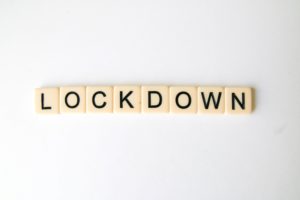
As of January 12, 2021, the Province of Ontario declared a state of emergency pursuant to the Emergency Management and Civil Protection Act (EMCPA). At this point, we have all seen this movie before, as well as the sequel the Reopening Ontario Act. The main difference is under the EMCPA Orders are limited in time and are supposed to be minimal in geographical scope, as well as interference with individual liberty.
During the first lockdowns last March, people would often ask me whether they were allowed to travel to a cottage. Mayors of cottage municipalities wrote in, asking people not to visit cottage properties and put strain on rural municipal services. At that time, the regulations were vague on what kinds of travel were permitted and where people were required to reside. During the current Stay at Home Order (SAHO) issued pursuant to the EMCPA, this issue has been clarified.
The current SAHO at s. 19 explicitly states you are allowed to travel to another residence if you are doing so for 1) one of the purposes set out in this order; or 2) the individual intends to reside at the residence for at least 14 days. This seems to be a recognition that people are entitled to reside at any property they wish. The regulation seems to be that wherever you are though, please stay put.
Other things that you are allowed to do during the current SAHO are as set out in Ontario. Regulation 11/21 Stay at Home Order:
- Working or volunteering where the nature of the work or volunteering requires the individual to leave their residence, including when the individual’s employer has determined that the nature of the individual’s work requires attendance at the workplace.
- Attending school or a post-secondary institution.
- Attending, obtaining or providing child care.
- Receiving or providing training or educational services.
- Obtaining food, beverages and personal care items.
- Obtaining goods or services that are necessary for the health or safety of an individual, including health care services and medications.
- Obtaining goods, obtaining services, or performing such activities as are necessary for the safe operation, maintenance and sanitation of households, businesses, means of transportation or other places.
- Purchasing or picking up goods through an alternative method of sale, such as curbside pickup, from a business or place that is permitted to provide curbside pickup under the Stage 1 Order.
- Attending an appointment at a business or place that is permitted to be open by appointment under the Stage 1 Order.
- Obtaining services from a financial institution or cheque cashing service.
- Obtaining government services, social services and supports, mental health support services or addictions support services.
- Delivering goods or providing care or other support or assistance to an individual who requires support or assistance, or receiving such support or assistance, including,
- i. providing care for an individual in a congregate care setting, and
- ii. accompanying an individual who requires assistance leaving their residence for any purpose permitted under this Order.
- Taking a child to the child’s parent or guardian or to the parent or guardian’s residence.
- Taking a member of the individual’s household to any place the member of the household is permitted to go under this Order.
- Doing anything that is necessary to respond to or avoid an imminent risk to the health or safety of an individual, including,
- i. protecting oneself or others from domestic violence,
- ii. leaving or assisting someone in leaving unsafe living conditions, and
- iii. seeking emergency assistance.
- Exercising, including,
- i. walking or moving around outdoors using an assistive mobility device, or
- ii. using an outdoor recreational amenity that is permitted to be open under the Stage 1 Order.
- Attending a place as required by law or in relation to the administration of justice.
23. Going to a bus station, train station or airport if you are leaving the province.
Finally, in a nod to the current isolation that people who live alone must feel, S. 25 of the SAHO explicitly states that those who live alone may gather with the members of a single household. In summary the current Stay at Home Order asks us to remain at home unless we are going out to: work, school, childcare, exercise, get stuff for the house, helping out our elderly parents, bank, grocery store, pharmacy, and if you live alone, to visit with a friend. In other words, it seems to provide for leaving the house to allow just about any activity. In addition, all business are closed, unless they are open for curbside delivery or take out. If you are scratching your head trying to figure out exactly what you are not allowed to do, take a number. The only thing that is for certain is that people will be getting ticketed for something. When that happens, lawyers like myself will be providing legal advice
